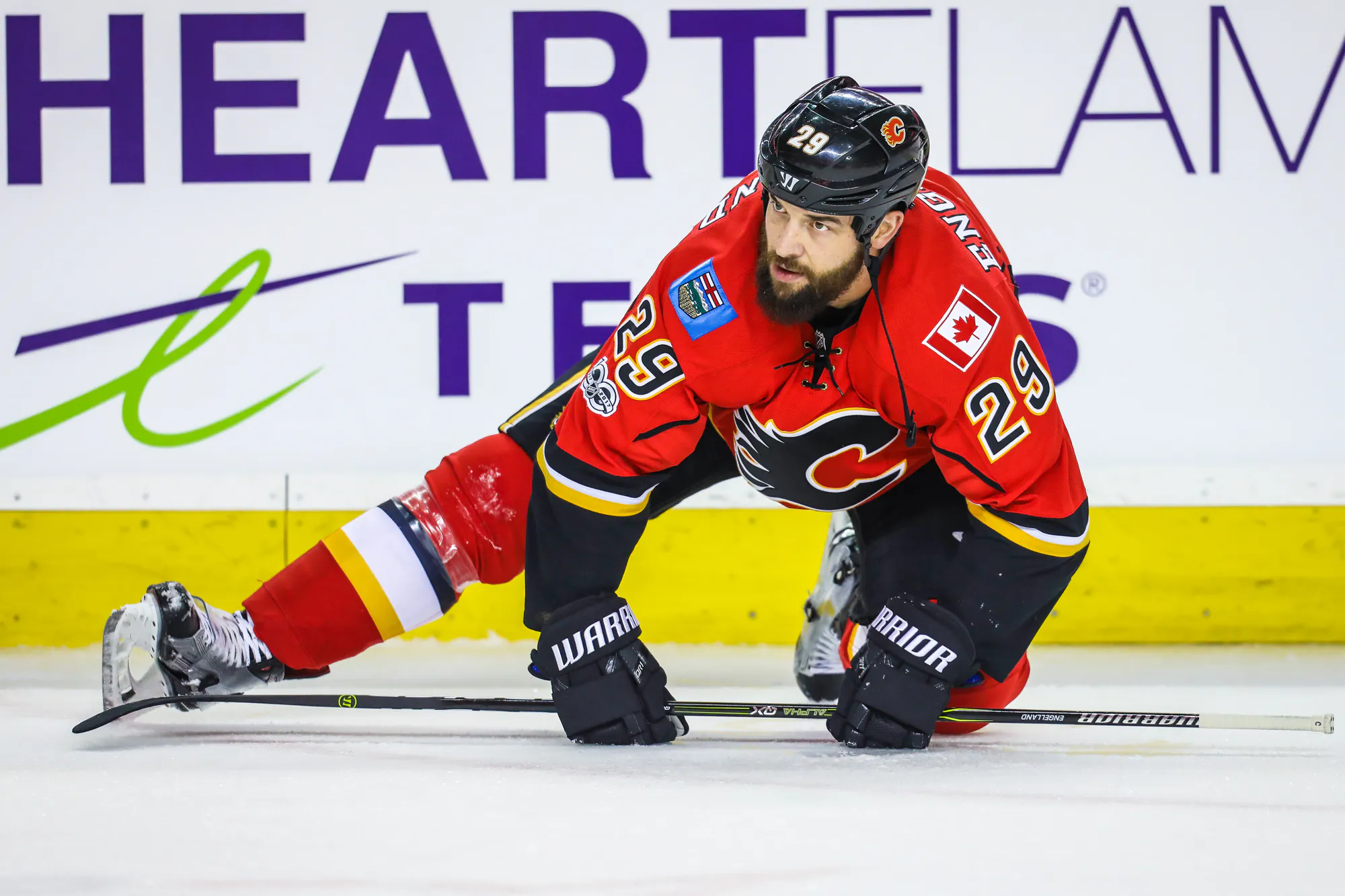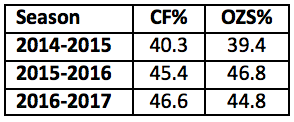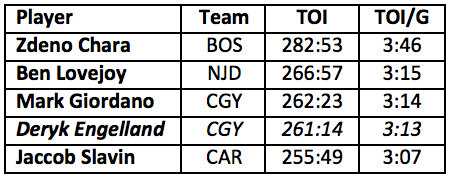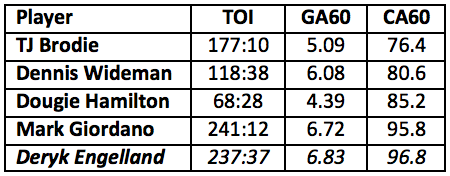UFA Profile: Deryk Engelland

Deryk Engelland has had an interesting run as a member of the Calgary Flames. Engelland’s three-year, $8.7 million contract is set to expire on July 1 and there’s debate as to what his future with the team should be. Some look at Engelland as a replaceable third pairing player while others really value the toughness and edge he’s brought to the Flames. While both viewpoints have merit, the question is whether the latter can outweigh the former in determining his future in Calgary.
This is the first of our UFA profiles after we ran through the team’s high profile restricted players earlier. Here’s what we have so far:
- Sam Bennett (RFA)
- Curtis Lazar (RFA)
- Alex Chiasson (RFA)
- Micheal Ferland (RFA)
Now let’s examine if there is a realistic future for Engelland with the Flames.
Evidence
Whether you thought Calgary reached on Engelland’s contract or not, it’s fair to say he’s played the role expected of him since joining the team. Engelland was brought in as a third pairing defenceman and has been used almost exclusively as such. The only exception has been due to injury, specifically late in Engelland’s first season with the Flames after Mark Giordano went down with a season-ending biceps tear in February 2015.
On the third pairing, Engelland has been used in a primarily defensive role, which makes sense. Engelland has never had much of an offensive bent to his game; in fact, he’s never scored more than seven goals in a season going all the way back to his WHL days in Moose Jaw. Knowing how he’s been used, Engelland’s outputs have been passable, but certainly not spectacular since joining the Flames.

In terms of both possession and the eye test, this past season was Engelland’s best in Calgary. He played 81 games, was okay in his own zone, and outperformed his offensive zone start ratio. Sure, his $2.9 million cap hit was never good value, but Engelland had some decent stretches over the last three seasons, with 2016-17 being his best.
Last season also saw Engelland see a massive bump in his penalty killing responsibilities. After averaging around a minute of shorthanded time per game in two seasons under Bob Hartley, Engelland saw his PK time almost tripled in year one with Glen Gulutzan at the helm. Engelland finished second to Giordano on the team in shorthanded ice time and was one of the most heavily utilized PK players league-wide.

After being a fourth or fifth penalty kill option in his first two seasons with Calgary, Engelland was leaned on heavily by Gulutzan and Paul Jerrard in year three. As such, it shouldn’t surprise you to know he finished second on the team with 134 blocked shots.
What’s less difficult to track empirically is Engelland’s impact on the physical side. He plays a tough-as-nails brand of hockey and led the team with nine fighting majors last season. As a result, Engelland endeared himself to many fans, with his one-on-two savagery against Vancouver in the 2015 postseason being especially memorable.
Deliberation
When looking at a possession aggregate, Engelland has been one of Calgary’s least effective players since joining the team. While things were better last season, Engelland’s combined 44.2% shot attempt rate is among the worst on the team since 2014-15. For context, the only players worse have been Lance Bouma, Ladislav Smid, David Jones, and Kris Russell.
And, even though last season was his best with the Flames, he was still clearly a bottom pairing guy at best. To illustrate that, let’s take a look at the possession outputs for all of Calgary’s somewhat regular defencemen last year.

In terms of effectiveness at five-on-five, Engelland was in the same neighbourhood as Stone and Wideman and slightly better than Jokipakka and Bartkowski. At any given time last season, Engelland was the team’s fifth or sixth best defenceman.
As for his time on the penalty kill, I think there’s a worthwhile discussion to be had about whether he was the ideal guy to be getting the minutes he did. In charting the team’s blueliners at four-on-five last season, Engelland was on the ice for the most action against.

As you can see, Engelland was on the ice for more shorthanded Corsi events and goals against than any of Calgary’s other d-men. Yes, some of that can be explained by his heavy shorthanded workload and being deployed in his own end to start so many penalty kill shifts. But, knowing how guys like Hamilton and Brodie performed in man-down situations, it would have been interesting to see if they could have been better fits. So, yes, Engelland saw a ton of penalty kill time, but from what I saw with my own eye and from looking at the data, he seems to be a middle-of-the-road option at best.
Verdict
I believe it’s time for the Flames to move on from Engelland. The guy gave the team all he possibly could in his three seasons, but I think there are other options available, either within or outside the organization, that can do a similar job. At 35, I don’t think bringing Engelland back to play on the third pair makes a ton of sense.
Now, if Calgary was really in love with Engelland’s toughness and veteran influence, I guess seeing him back for another year at around $1 million wouldn’t be an absolute disaster. In saying that, though, I believe Brett Kulak is ready to be a full time NHLer and the Flames will likely be looking to upgrade their blueline in free agency, too. From a roster standpoint, I’m not sure if there’s a natural fit for Engelland.
Finally, let’s not forget the expansion angle. Engelland’s offseason home is Las Vegas and there has been plenty of speculation linking him to the Golden Knights. Signing there would be a nice story for Vegas, and could mean the Flames wouldn’t lose anyone in the expansion draft. Regardless, I think Engelland will find NHL work next season, but I’m just not sure it should be in Calgary.
Recent articles from Pat Steinberg





